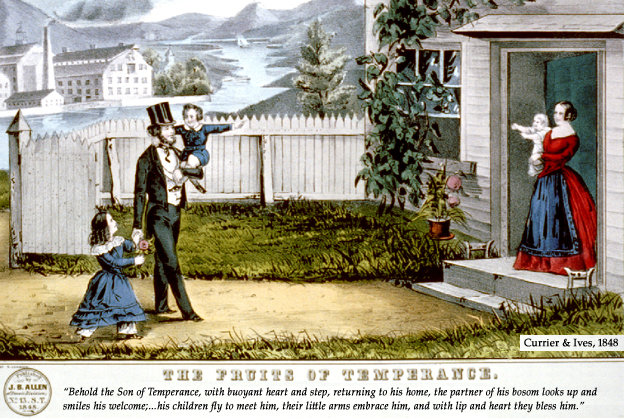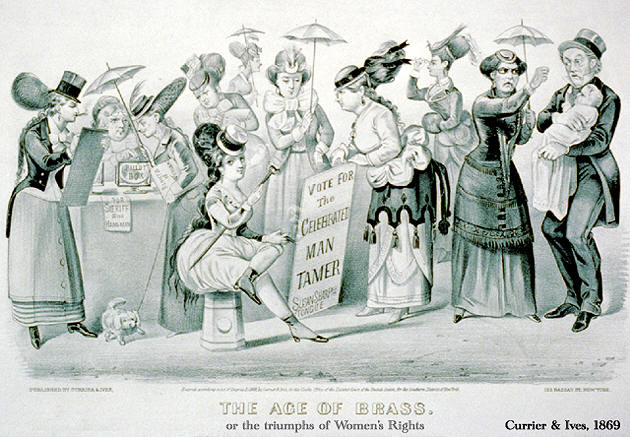|

In 1928, in his famous dissent in
Olmstead v. United States (1928),
Supreme Court Justice Louis Brandeis crowned the right to privacy as
the core value in American life.1p "The makers of our
Constitution," Brandeis declared, "sought to protect Americans in their
beliefs, their thoughts, their emotions and their sensations. They
conferred, as against the Government, the right to be let alone -- the
most comprehensive of rights, and the right most valued by civilized
men."1p Brandeis's ringing tribute may have been on the losing
side in the 1920's, but since then Americans have increasingly come to
share his view of the right to be let alone as the key to individual
dignity, autonomy, and fulfillment.1s Indeed, in our time,
commitment to the right to privacy shapes debate on everything from
media analysis to medical treatment.2s Meanwhile, calls to shift governmental
functions from the public sphere, which is usually associated in this
discourse with incompetence, waste, and stagnation, to the private
realm, which is typically linked with resourcefulness, efficiency, and
progress, have grown apace.3s
Rather than attempting to explain how Americans came to put such a
premium on private activities or why we seem less and less inclined to
participate in public affairs, this essay presents a snapshot of the
historical moment when the right to privacy was first recognized as
a fundamental principle of American law. By locating the
arguments
that Brandeis and his law partner, Samuel Warren, advanced in
"The Right to Privacy" (1890)
2p
within the social and political landscape of the late nineteenth century,
I hope to show that the valorization of private life that is so evident
in postmodern American society began as what may be described, to
borrow a phrase that has been used in other contexts, as a revolt
against modernity.4s While this revolt
can be generally defined as a reaction against the rise of industrial
capitalism, it can be more specifically understood an attempt to
preserve the traditional family from the unsettling effects of the
women's rights movement and from the invasive aspects of mass
culture, especially as
embodied in the popular press.
Many other scholars have drawn attention to
the conservative, patrician, and patriarchal standpoint of "The Right
to Privacy." 5s Taking
these works, most notably, Anita Allen and Erin Mack's "How Privacy
Got Its Gender," as my starting point, I try to place Brandeis and
Warren's article even more concretely within the cult of domesticity
that consumed American society in the decades after the Civil War.6s What becomes clear when "The Right to Privacy" is set
directly within the flood of
lithographs, advice books, advertisements, newspaper editorials,
political tracts, and legal rulings that idealized the family
throughout this era is that Brandeis and Warren were not mapping out
an area in which individuals--male or female--could exercise some type
of freedom of choice. In the late nineteenth century, the
private realm was almost never seen as a space in which individuals enjoy a significant
degree of liberty.7s Instead,
marching in lockstep with contemporary celebrations of the family, "The Right to Privacy" equated the
private sphere with the traditional family circle, an arena in which individuals
were expected to find fulfillment, not by choosing among various modes
of behavior, but by bending to the discipline inherent in the
hierarchy of the
home.

Placing Brandeis and Warren's work within its historical context also
shows that the public/private
dichotomy did not, in its original iteration, draw a boundary between political coercion and
individual freedom. On the contrary, in nineteenth-century American culture and
legal theory, the public usually signified the world of social
climbing, economic conflict,
and political one-upmanship. The private, on the
other hand, referred to that part of life in which human beings meet
(or fail to meet) their moral obligations. Whereas classical European versions of the
public/private split revolve around the distinctions between
state and family, politics and biology, reason and passion,
citizenship and self-interest, freedom and necessity, the
public/private dichotomy in the United States, at least as it emerged
near the end of the late nineteenth-century, provides yet more
evidence of American exceptionalism.8s
As indicated by the anti-political sentiments expressed by
Brandeis and subsequent champions of the right to privacy,
the political process at least in times of relative peace, appears in the
American intellectual tradition, not as an expression of our capacity
engage in the vita activa, but as a largely superficial system in which
self-interested groups and individuals scramble for pieces of pie. 9s
Brandeis and Warren accordingly defended the private realm as an asylum from the
whole of modern society and did not even single out government from other ostensibly distasteful
features of modernity
such as mass entertainment and
yellow journalism.
Meanwhile, by celebrating the domestic sphere as the area in
which each man develops his "inviolable personality" or, as Brandeis later put it in Olmstead,
his "spiritual nature," "feelings," and "intellect," they set up the family as the site of
authentic experience. The private/public dichotomy, from this
peculiarly American standpoint, pits the moral reality of the family
against the hollow and frequently corrupting spectacle of business, politics, and
social frivolity. In short, for Brandeis and Warren, the family
home was the genuine center of human existence, and everything else was just the
shallow world outside.
In order to comprehend how the right to privacy evolved over the
course of the twentieth century, it is, therefore, necessary first to
locate its origins in late nineteenth-century anxieties about the ways
in which the forces of modernity seemed to threaten the order of family
life. What we shall see if we set aside
more recent tendencies to conflate privacy and freedom is that
Brandeis and Warren wrote "The Right to Privacy," not because they
felt that the conditions of modern industrial society were impinging
on individual liberty, but because they believed that these conditions
had made it increasingly difficult for individuals to practice the
discipline required to discharge properly their particular duties as fathers, mothers,
daughters, sons, sisters, brothers, husbands, and wives.

Go to page 2: The Anxieties of Exposure
|